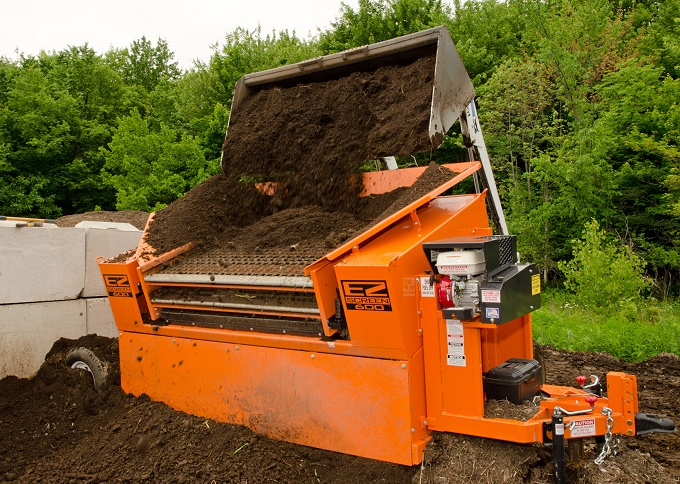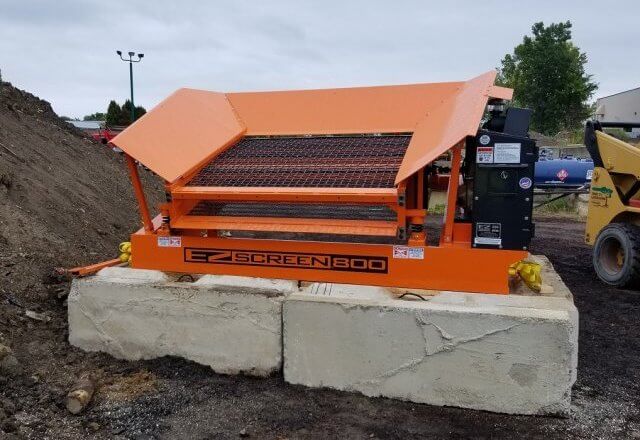Elevate Your Projects with a Costs Dirt Screen for Sale - Unmatched Efficiency Assured
Elevate Your Projects with a Costs Dirt Screen for Sale - Unmatched Efficiency Assured
Blog Article
Enhance Product Recuperation With State-Of-The-Art Dirt Screens for Recycling Facilities
Exactly how precisely do dirt displays boost material recuperation? In this discussion, we will check out the responses to these questions and delve into real-life situation researches that highlight the effective assimilation of dust screens in reusing facilities. Prepare to uncover the transformative power of advanced dust displays and their influence on improving material recovery.
The Significance of Dirt Screens in Recycling Facilities
Dust displays play a vital duty in reusing centers by successfully dividing dust and various other contaminants from recyclable materials. These screens, also referred to as trommel screens, are made to properly eliminate undesirable particles and make sure that only tidy and functional materials are refined better.
The key function of dirt displays is to divide larger items of dust, rocks, and other non-recyclable things from the stream of products. By doing so, they prevent these impurities from going into the recycling process and possibly harmful tools or endangering the high quality of the end product.
In addition, dirt displays help to enhance the general effectiveness of reusing operations. By eliminating dirt and various other contaminants early while doing so, the displays decrease the amount of manual work needed to arrange and cleanse the materials later. This not just conserves time but likewise enhances and decreases costs performance.
Furthermore, the use of dirt displays adds to ecological sustainability. By making certain that just clean and unpolluted materials are processed, recycling centers can produce higher-quality recycled items. This, subsequently, encourages the usage of recycled products in different sectors, decreasing the demand for virgin sources and decreasing the ecological influence of source removal and production processes.
How Dust Screens Improve Material Healing
Using dust displays in reusing facilities significantly enhances the procedure of material healing. These displays play a crucial role in dividing dirt, debris, and various other undesirable products from the recyclable stream, leading to boosted performance and higher top quality output.
Among the main methods which dirt displays improve product recovery is by getting rid of impurities that can impede the recycling process. Dirt, rocks, and other non-recyclable products can trigger damage to equipment, reduce the effectiveness of succeeding sorting processes, and pollute the final recycled products. By properly screening out these impurities, dirt screens aid guarantee that the recyclable materials continue to be pure and of excellent quality.
Moreover, dust screens allow reusing centers to recoup a higher quantity of valuable products. By eliminating dirt and debris, the displays permit an extra precise sorting process, boosting the recovery rate of recyclable products. This suggests that more important sources can be redeemed and reused, minimizing the requirement for virgin materials and reducing the ecological impact connected with their removal and production.
In addition to boosting material healing, dirt displays also add to the general effectiveness of recycling centers. By protecting against equipment damage and lowering downtime triggered by obstructions and clogs, these screens aid preserve a smooth and uninterrupted recycling process. This raised effectiveness converts right into price savings and permits higher throughput, inevitably enhancing the success and sustainability of recycling operations.
Secret Attributes of State-of-the-Art Dirt Screens
To further enhance the efficiency and effectiveness of product healing in reusing centers, state-of-the-art dust displays are outfitted with vital functions that maximize the splitting up procedure and make sure the finest output (dirt screen for sale). These functions include advanced testing modern technology, personalized setups, and durable building
One key feature of state-of-the-art dust screens is their sophisticated screening technology. These displays are created with precision-engineered mesh or perforated plates that successfully different dirt and particles from the recyclable products. The size and spacing of the openings in the screens can be tailored to fit different types of products, permitting for reliable separation and maximum recuperation prices.
Another crucial function of these dust displays is their personalized setups. Recycling facilities can change the speed, angle, and amplitude of the screens to enhance the separation procedure. This flexibility permits operators to adjust the screens according to the specific needs of the materials being refined, causing enhanced accuracy and greater healing prices.
Moreover, cutting edge dust screens are built with durable construction to hold up against the severe conditions of reusing facilities. They are made from sturdy materials such as stainless-steel or high-strength alloys, guaranteeing long life and very little downtime as a result of upkeep or repair work. Furthermore, these screens are developed with very easy access for cleaning and upkeep, decreasing and facilitating effective procedures downtime.
Actions to Implementing Dust Screens in Recycling Facilities
What are the necessary steps for including dust screens into reusing facilities? Executing dirt displays in reusing facilities includes an organized strategy to guarantee reliable installation and operation. The following are the required actions to efficiently incorporate dirt screens:
Evaluation: Conduct a comprehensive evaluation of the center's needs and demands to establish the suitable dirt display specs. Take into consideration elements such as product kind, quantity, and preferred separation effectiveness.

Setup: Prepare the facility for the setup of the dust displays. This may involve retrofitting existing equipment or developing space for brand-new installments. Adhere to producer guidelines and make certain proper positioning and integration with the recycling procedure.
Testing and Calibration: Once the dirt screens are set up, perform extensive screening to make certain appropriate functioning. dirt screen for pop over to these guys sale. Adjust the system to accomplish wanted splitting up performance and reduce material loss
Training and Maintenance: Train personnel on operating and keeping the dust screen system. Establish a regular maintenance schedule, including cleansing and evaluation, to ensure ideal performance and durability.

Study: Successful Product Healing With Dust Screens
Integrating dust screens into reusing facilities has proven to read this post here be an effective technique for achieving effective product healing, as shown by several instance research studies. These study highlight the positive influence of dirt displays on the overall recycling process.
By carrying out dust displays, the center was able to significantly decrease the quantity of contamination in their recyclable products. The intro of dust displays also helped to tear and reduce the wear on arranging tools, lowering upkeep prices and downtime.
An additional study showcases a country recycling facility that fought with excessive dust and particles in their inbound waste stream. By mounting dust displays, the center had the ability to get rid of a huge section of the undesirable products, causing cleaner recyclables and boosted efficiency in the arranging procedure. This caused greater product recovery prices and lowered waste sent out to the garbage dump.
These case studies show that including dirt screens right into reusing facilities can have a considerable positive effect on product recuperation. By efficiently removing dust, debris, and various other impurities, reusing facilities can improve their total recycling prices, lower landfill waste, and make best use of the worth of retrieved products.
Verdict
Finally, using state-of-the-art dust screens in recycling facilities is crucial for boosting material recovery. These displays efficiently remove dust and particles, permitting the reliable separation and recovery of valuable products. By carrying out dirt displays, recycling centers can significantly enhance their recycling processes and add to a more lasting future.
One of the main methods in which dust screens boost material healing is by eliminating contaminants that can hinder the reusing process. By properly pop over to this web-site screening out these impurities, dirt screens aid ensure that the recyclable materials continue to be pure and of high quality.
Additionally, dust displays enable recycling centers to recover a higher amount of valuable products.In enhancement to improving material healing, dust screens likewise add to the overall efficiency of recycling centers.In final thought, the use of state-of-the-art dirt screens in reusing facilities is essential for enhancing material healing.
Report this page